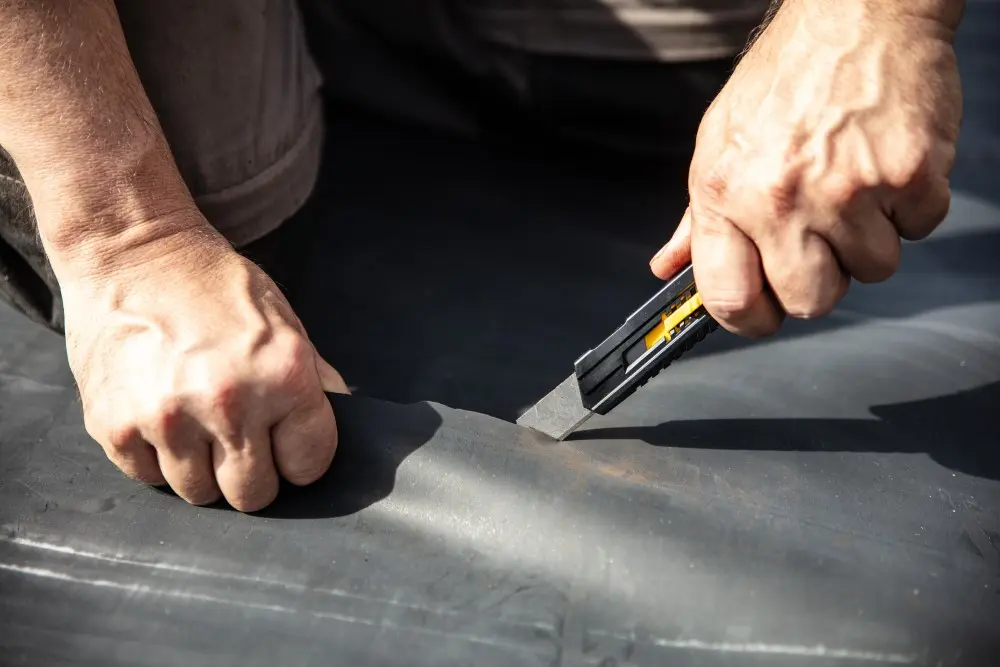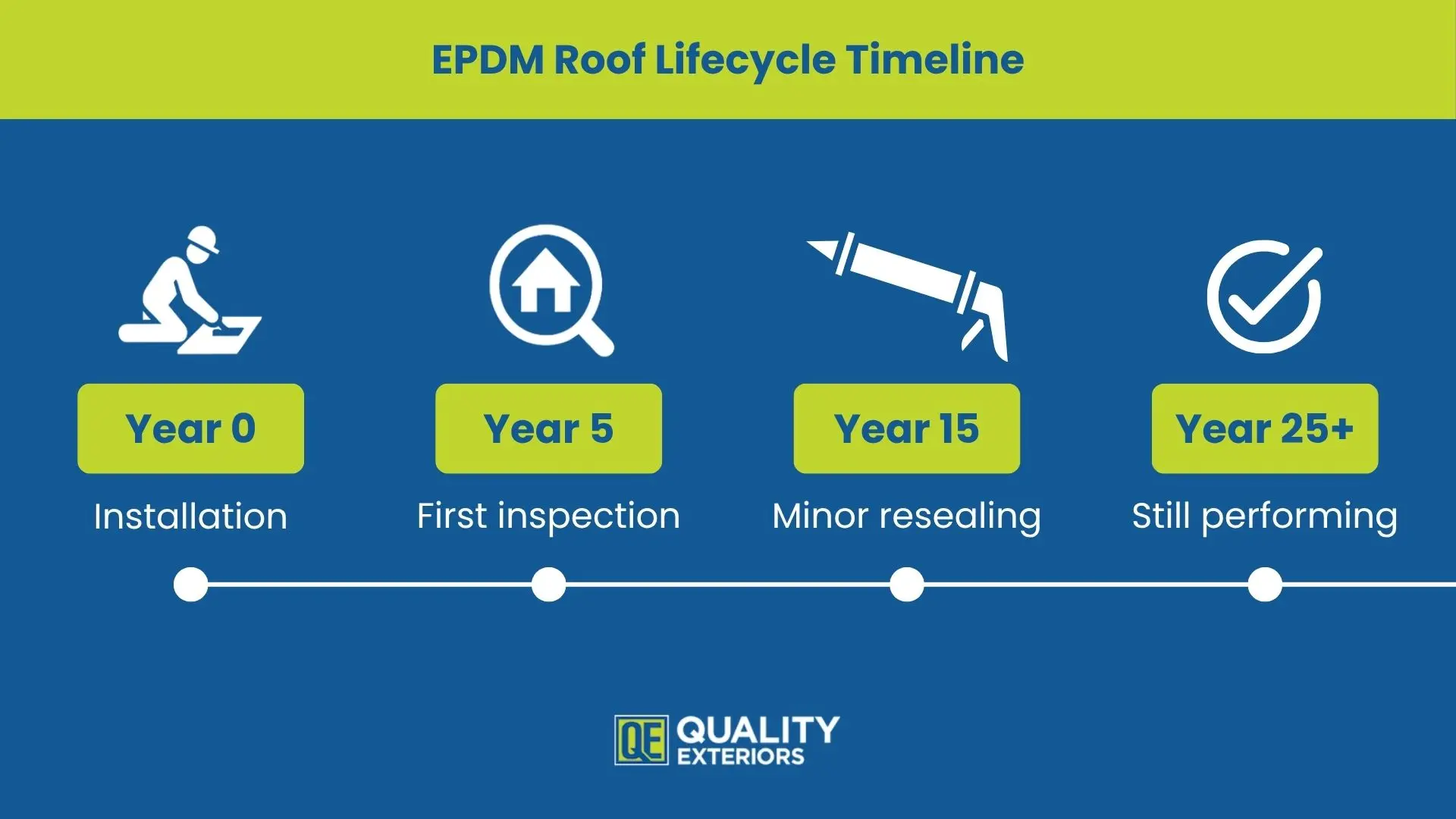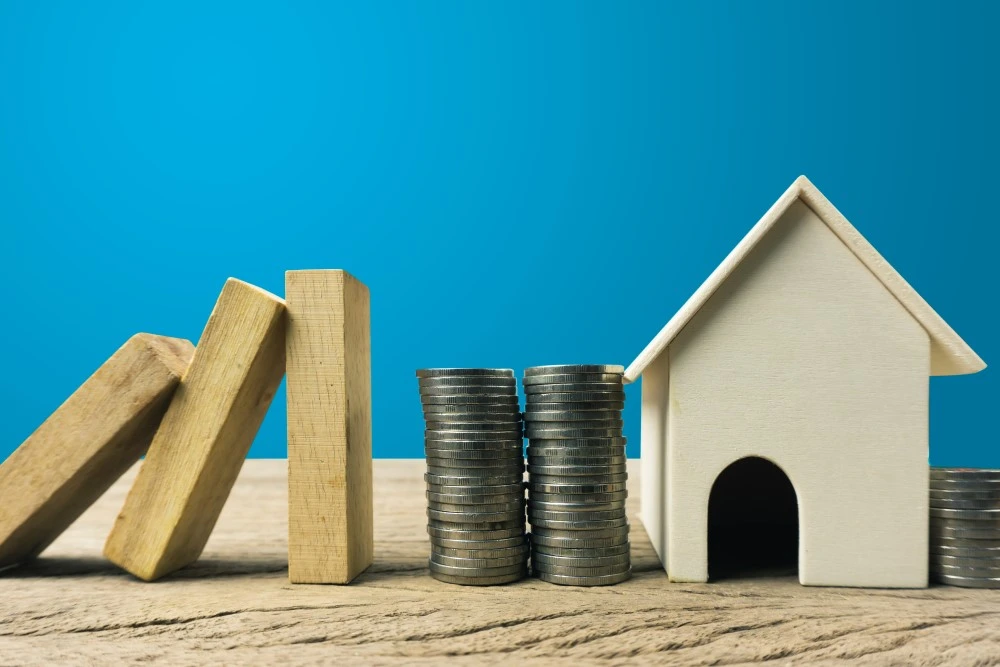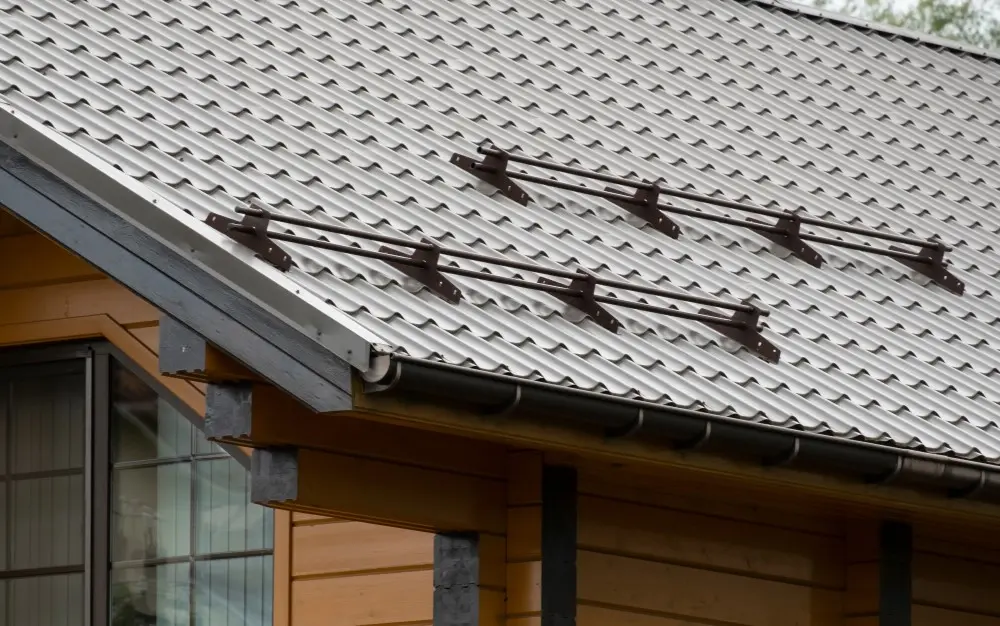What Is EPDM Roofing? Understanding the Basics.
EPDM roofing systems are a sophisticated approach to commercial roofing, using ethylene propylene diene terpolymer technology to create flexible and weather-resistant membranes. The EPDM roofing material arrives in large sheets, which reduces seams and creates better protection against water infiltration compared to other materials.
The ethylene propylene diene composition gives the membrane exceptional flexibility across temperature ranges from -40°F to 300°F. This synthetic rubber maintains its elasticity without becoming brittle, a critical feature for buildings experiencing varied climate conditions. Understanding these roofing basics helps property owners make informed decisions about their building protection.
Most EPDM membranes come in black, though white EPDM membrane options are available. Black EPDM membranes absorb the sun's heat, which can reduce heating costs in cooler months, while white membranes reflect UV rays and help lower cooling costs in warmer climates.
Advantages and Disadvantages of EPDM Roofing
Let’s now explore the benefits and limitations of this material, as this helps property owners make informed decisions about their roofing systems. EPDM roofing offers significant advantages, but it has some considerations worth examining.

Advantages of EPDM Roofing
The benefits of EPDM roofing material make it popular among commercial roofing systems:
- Cost-effective solutions: Lower installation and material costs compared to many other roofing materials.
- Long roof life: Properly installed systems last 25-40 years with appropriate maintenance.
- Weather resistance: Excellent performance against hailstones, wind damage, and extreme temperatures.
- Energy efficiency: White membranes reduce cooling costs, while black versions can lower heating costs.
- Low maintenance: Simple upkeep requirements compared to complex roofing systems.
- Ozone-resistant rating: Superior protection against atmospheric ozone exposure.
- Lightweight: Minimal structural load on existing buildings.
- Chemical resistance: Stands up well against various chemical exposures.
Disadvantages of EPDM
Some limitations require consideration when evaluating whether EPDM roofing is right for you:
- Puncture susceptibility: Sharp objects and excessive foot traffic can damage the membrane.
- Seam concerns: Adhesive-bonded areas may weaken over time without proper maintenance.
- Limited aesthetics: Utilitarian appearance may not suit all architectural styles.
- Shrinkage potential: Aging membranes may contract slightly around penetrations.
#cta_here
EPDM Installation Methods: Three Proven Approaches
Professional roofing contractors use three primary installation methods, each with distinct advantages for different building conditions and performance requirements.
Fully Adhered Systems
Fully adhered EPDM installation bonds the membrane directly to the roof decking using specialized adhesives. This method offers superior wind uplift resistance, making it ideal for buildings in areas prone to severe weather. The adhesive creates a seal across the entire surface to eliminate potential air movement beneath the membrane.
Mechanically Fastened Systems
Mechanically attached EPDM systems secure the membrane using metal fasteners and plates through the substrate. This installation method is fast and often has lower labor costs compared to fully adhered systems. The fastening pattern distributes loads across the membrane while allowing for thermal movement.
Ballasted Systems

Ballasted assemblies use loose-laid EPDM membranes that smooth stones or concrete pavers hold in place. The ballasted layer typically weighs 10-12 pounds per square foot, requiring adequate structural support. This system offers excellent energy efficiency because the ballasted roof provides additional insulation mass.
Membrane Thickness and Performance Options
There are various thickness options measured in mils for each EPDM roofing product, with each serving specific applications and performance needs. Thicker membranes generally provide enhanced puncture resistance and longer service life, but their up-front investment is higher.
Common thicknesses include:
- 30 mil: Light-duty applications on protected surfaces.
- 45 mil: Standard commercial use for most buildings.
- 60 mil: Enhanced durability for high-traffic areas.
- 100 mil: Heavy-duty applications requiring maximum protection.
Commercial buildings typically use 45 mil or 60 mil membranes, balancing cost considerations with performance requirements. Different types of commercial buildings require specific membrane thickness based on their usage patterns and environmental exposure. Widths ranging from 7.5 to 50 feet allow contractors to minimize seams and improve installation efficiency on various roof sizes.
The Cost of EPDM Roofing
EPDM roofing is a cost-effective solution for commercial buildings, with installation prices typically ranging from $4 to $12 per square foot. For example, a 2,500-square-foot roof would have a total cost between $10,000 and $30,000, depending on factors like membrane thickness, installation method, and regional labor rates.
Beyond the upfront cost, EPDM offers strong long-term value. Its low maintenance requirements and potential lifespan of 25 to 50 years often make it more economical over time compared to systems that require frequent roof repairs or earlier replacement.
EPDM Roof Maintenance Made Simple

When properly installed, EPDM roofing systems routinely exceed their expected material lifespan through decades of reliable performance. The synthetic rubber composition continues to be flexible and weather-resistant longer than many other materials, contributing to reduced long-term ownership costs.
Maintenance requirements are also straightforward throughout the system's life:
- Routine inspections: Biannual examinations identify potential issues before they become problems.
- Debris removal: Regular cleaning prevents drainage blockages and membrane stress.
- Seam maintenance: Periodic inspection and resealing of joints maintains weather integrity.
- Puncture repairs: Quick patching of any damage prevents water infiltration.
- Drain cleaning: Keeping drainage systems clear prevents ponding water issues.
It only takes a few routine tasks to keep EPDM roofs in top shape for decades. Consistent maintenance not only prevents costly repairs but also protects your investment year after year.
EPDM vs. Other Commercial Roofing Systems
Still not convinced that this is the right material for you? Comparing different commercial roofing options helps property owners select the ideal system for their needs and budget requirements. Each material offers distinct advantages depending on building characteristics, climate conditions, and performance priorities.
EPDM roofing material offers the best combination of affordability and longevity among single-ply systems. Its low-maintenance nature also helps minimize commercial roof problems over time, making it a smart, dependable choice for cost-conscious property owners.
Is EPDM Right for Your Project? Our Recommended Uses.
Selecting the right roofing materials is a big decision. You’ll need to evaluate building characteristics, climate conditions, budget constraints, and long-term maintenance capabilities. EPDM roofing systems excel specifically for commercial buildings in certain applications, while other materials may be better under different project requirements.
EPDM works particularly well for commercial buildings with these characteristics:
- Large flat surfaces: Fewer seams provide installation efficiency and better weather protection.
- Budget-conscious projects: Proven long-term performance without premium material costs.
- Stable access requirements: Buildings that don't require frequent rooftop equipment maintenance.
- Extreme temperature zones: Flexibility matters where seasonal variations are significant.
- Low maintenance priority: Properties emphasizing minimal upkeep over aesthetic considerations.
If the building requires frequent rooftop equipment access, you may want to consider alternative systems. The same goes for projects where appearance takes precedence, or there are structures with complex geometries that need numerous penetrations, as these could compromise membrane integrity.










